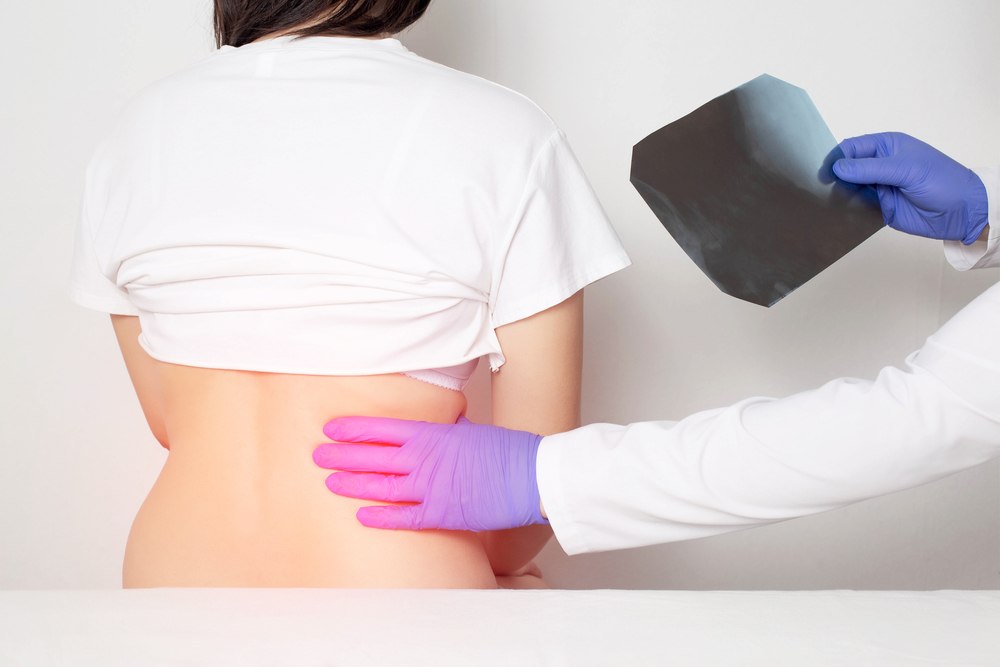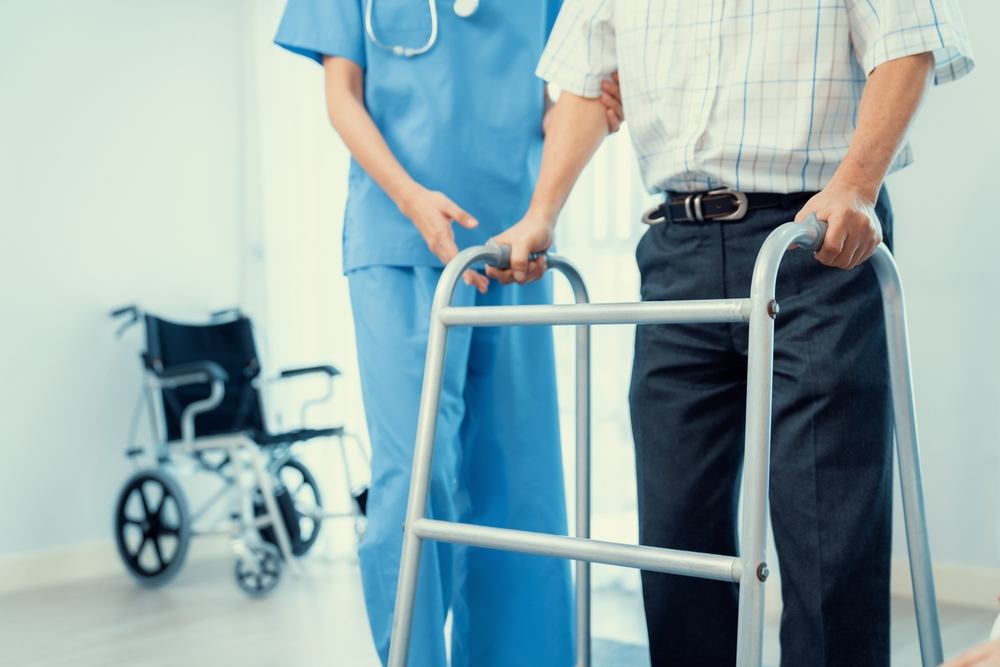 Humans have twelve ribs in the body. The first seven ribs are directly attached to the sternum by the intercostal muscles and are known as the “true ribs,” while the 8th, 9th, and 10th ribs are not attached to the sternum. The 11th and 12th ribs are half the size of the other ribs and are known as the “floating ribs .”Each rib has a head, shaft, and neck, and all ribs are attached to the thoracic vertebrae.
Humans have twelve ribs in the body. The first seven ribs are directly attached to the sternum by the intercostal muscles and are known as the “true ribs,” while the 8th, 9th, and 10th ribs are not attached to the sternum. The 11th and 12th ribs are half the size of the other ribs and are known as the “floating ribs .”Each rib has a head, shaft, and neck, and all ribs are attached to the thoracic vertebrae.
Ribs are numbered based on what vertebrae they are attached to. The ribs are a critical part of the body with an important job as they protect our vital organs. If the rib cage is damaged in any way, it can be painful and result in injuries ranging from minor contusions or serious damage. One of the most common ways to injure the ribs is blunt force trauma which can occur because of impact to the ribs caused by a traumatic event such as a fall or car accident. The gravitational force of an accident will apply pressure to the ribs, resulting in injury. If not dealt with in a timely manner, injuries after a car accident can become severe. It is critical to seek medical care if you have been involved in a car accident, even if it is days later, as delayed injuries are common.
Delayed Rib Pain After an Accident
It is very common, more often than you would think, to walk away from a car accident without any initial pain. However, because of the nature of car accident injuries, it may be days or weeks later before you recognize signs of a rib injury. It is noted that most victims of a car accident don’t notice rib pain until 14 to 18 days after the incident. When signs and symptoms of a rib injury do present themselves, it is not advisable to wait it out and hope these injuries will heal themselves. This can cause more harm than good as delaying treatment can lead to other health concerns, such as a chest infection or pneumonia.
Additionally, if it is a fracture or displacement of a rib that is the source of pain, while these injuries may heal over time, they could heal improperly. Rib fractures that don’t heal correctly can lead to such conditions as mal-union, when a rib heals in an incorrect position so as to limit function and appear bent; delayed union, when the rib fracture doesn’t heal for six months or more; or non-union, when the rib can’t heal without intervention such as surgery due to multiple breaks, infection, or lack of blood supply to the area. Any of these conditions are potentially dangerous and can lead to organ damage, difficulty breathing, or dangerous infections. It is best to seek medical attention right away after a car accident or to see your doctor as soon as you begin to experience any type of rib pain.
Causes of Rib Pain
Rib pain after a car accident is a sure sign of an injury. The most common types of rib pain after a car accident are:
Costochondral separation
This rib injury occurs when the ribs separate from the cartilage connecting the ribs to the breastbone
Intercostal strain
The intercostal muscles are muscles located in the body that attach one rib to the other. During a car accident, these muscles can be pulled, strained, or torn, causing rib pain. Although not as serious as a rib injury, the pain can be severe.
Bruising
Bruising of the ribs as a result of a car accident is very common because the impact causes the body to hit the steering wheel or be held back by the seat belt. Bruising, while not as severe as other types of rib injuries, is still quite painful and can occur as a result of strain on the muscle, tissue, or cartilage of the chest wall. Signs of bruising may include discoloration of the skin, chest spasms, pain, tenderness, or swelling around the chest region.
Soft tissue injuries
The tissue and muscles surrounding the ribs are what are responsible for allowing the rib cage to expand as the lung expands with breathing. Soft tissue injuries often happen as a result of blunt force trauma. Pain as a result of this type of injury can make it difficult to breathe, leading to respiratory concerns and other health issues.
Fractured or broken ribs
The force of a car accident can cause bones of the rib cage to fracture or break. Fractures can range in size from small hairline fractures to cracked ribs, to fractured ribs in multiple places. Broken ribs are even more severe as the sharp pieces of the broken bone are cause for concern for puncturing organs or damaging major blood vessels. The pain as a result of fractured or broken ribs can affect one’s ability to cough, sneeze, laugh, or take normal breaths. It is an injury that can result in intense pain that may last for quite a while as the injury fractures and breaks heal.
Flail chest injury
Of all rib injuries, this is the most severe. This type of rib injury is when three or more ribs are broken in two or more places. As a result, the rib cage loses its normal shape and the function of the ribcage is affected, which could lead to damage to internal organs as well.
Symptoms of a Rib Injury
The symptoms experienced as a result of a rib injury will vary depending on the type and severity of the injury. Some common symptoms of a rib injury to be aware of can include:
- Pain and discomfort and the site of the injury
- Pain in the ribs when you cough, breath, or make any other sudden movements
- Muscle spasms
- Breathing difficulties
- Grinding or crunching noises at the site of the injury
- Malformation of the rib cage
- Fever related to a chest infection as a result of an undiagnosed rib injury
- Anxiety and restlessness
- Dizziness or fatigue
- A headache that does not go away
Diagnosis of Rib Injuries
 There are a number of tests that medical professionals can administer to diagnose rib injuries of various degrees. First and foremost, a doctor will perform a thorough physical examination, pressing on the injured area and checking the lungs. Imaging tests will also be ordered to diagnose fractures, breaks, or damage to soft tissue, vessels, or organs. The different types of common imaging tests used for diagnosing rib injuries are:
There are a number of tests that medical professionals can administer to diagnose rib injuries of various degrees. First and foremost, a doctor will perform a thorough physical examination, pressing on the injured area and checking the lungs. Imaging tests will also be ordered to diagnose fractures, breaks, or damage to soft tissue, vessels, or organs. The different types of common imaging tests used for diagnosing rib injuries are:
- X rays– used to show bone damage such as rib fractures or breaks. They can also be used to sometimes detect soft tissue or internal organ damage.
- CT Scans – show a detailed image of bones, muscles, organs, and blood vessels and are more detailed than a standard x-ray
- Bone Scans – uses radiotracers and a camera to look closely at the bone structure to diagnose infection or injury that can’t be seen on an x-ray
- MRIs – uses radio waves to detailed images of tissue and organs in the body
Treatment for Injured Ribs
Getting in to see your doctor to diagnose rib injury is the first step to healing. At AICA in Conyers, medical experts will then take the diagnosis and work with you to develop an individualized treatment plan.
First, the doctor will address the pain from the injury. Icing the injury or oral pain relievers can help with pain management. Rest is critical to the healing process.
Extraneous or constant movement will only exacerbate the injury, thus requiring more healing time. Avoid strenuous movements, lifting, participating in sports, or anything that could cause more damage to the ribs. Reinjuring the problem area will only lead to additional complications. Once the pain is under control, medical professionals may also suggest such treatments as breathing exercises to strengthen the lungs, or, for the more traumatic injuries, mechanical ventilation (help with breathing) or surgery may be required.
Recuperation
For most rib injuries, a one- to two-month recuperation time is about average. Of course, this depends on the type of injury incurred as well as the severity of the injury. Significant chest trauma could require several months of recuperation time. Rib pain is often worsened when breathing in and out, as filling up the lungs requires movement of the chest and ribs. But it is important to take slow, deep breaths when healing from a rib injury.
Short, shallow breathing, while limiting pain, can cause lung complications like pneumonia, an added side effect of shallow breathing because of a rib injury. Keep in mind these techniques to help manage the pain and ward or decrease the chances of pneumonia:
- Cough into a pillow – Coughing can be good to keep mucus or fluid from settling into the lungs, but it can also be painful with a rib injury. To minimize the pain, cough into a pillow, as the pillow can help absorb some of the momentum.
- Breathing as normally as possible – practice breathing exercises and take as many normal breaths as possible to avoid shallow breathing
- Sit upright – rib pain can be worse when lying down. Prop yourself up on a pillow or in a recliner, even to sleep at night if you can, to lessen rib pain while healing
- Avoid drinking or smoking – drinking too much alcohol after a rib injury could affect the healing process and has been linked to pneumonia. Smoking could also affect the lungs during the recuperation time and increase the chances of developing pneumonia. Smoking has also been proven to delay bone healing.
Rib Injury Complications
Unfortunately, there are many complications that can arise as a result of a rib injury due to a car accident in Conyers. Oftentimes, the impact of a crash can lead to not just one broken rib but several. The more broken ribs you suffer, the greater the risk of complications and the greater the risk of internal damage. When ribs break, it can lead to damage or tears of blood vessels or internal organs.
These types of internal complications from a rib fracture can include:
- Punctured or lacerated organs – The bottom ribs are nearer to other vital organs such as the kidneys, liver, and spleen. While these bottom ribs are the most flexible and least likely to break, they still can, and a rib break exposing jagged, pointy bone can cause lacerations to any one of these internal organs.
- Punctured lung – Fractures of the middle ribs near the lungs can puncture the lung, causing it to collapse
- Punctured aorta – the top three ribs are near the aorta, a major artery in the body responsible for blood flow to the heart. A puncture to the aorta or one of its branches could cause internal bleeding.
Medical Care at AICA in Conyers
 Rib pain and injury as a result of a car accident is no simple matter. While the injury may seem mild, it can be anything but. Delayed rib injuries are a serious cause for concern, and rib injury undiagnosed for any period of time is not what you want. Don’t hesitate to seek medical care after a car accident. In fact, it is imperative that you do it for the safety of your health. Our team of medical professionals at AICA in Conyers is experienced in diagnosing and treating all types of car accident injuries, including rib injuries. Any type of car accident injury can and will affect your lifestyle. Without prompt and proper treatment, injuries will only worsen, leading to bigger health problems and suffering. This doesn’t have to be the case. Get ahead of the problem with proactive care at AICA. We will provide quality care, a thorough examination, prompt diagnosis, and comprehensive treatment to see that you have the best possible care to heal from your injuries.
Rib pain and injury as a result of a car accident is no simple matter. While the injury may seem mild, it can be anything but. Delayed rib injuries are a serious cause for concern, and rib injury undiagnosed for any period of time is not what you want. Don’t hesitate to seek medical care after a car accident. In fact, it is imperative that you do it for the safety of your health. Our team of medical professionals at AICA in Conyers is experienced in diagnosing and treating all types of car accident injuries, including rib injuries. Any type of car accident injury can and will affect your lifestyle. Without prompt and proper treatment, injuries will only worsen, leading to bigger health problems and suffering. This doesn’t have to be the case. Get ahead of the problem with proactive care at AICA. We will provide quality care, a thorough examination, prompt diagnosis, and comprehensive treatment to see that you have the best possible care to heal from your injuries.
If you have suffered a car accident and have injuries, contact us to schedule an appointment. Your quality of life doesn’t have to suffer. Let us help you get back on your feet and back to enjoying life once again. Call us today to start your healing journey.
